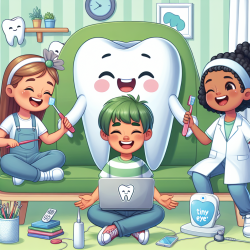Language development is a critical aspect of a child's growth, especially for those born under high-risk conditions such as prematurity or medical complications. The Neonatal Intensive Care Unit (NICU) environment, with its unique challenges, presents an opportunity for healthcare professionals to support the early language development of these vulnerable infants. Drawing insights from the research article, "Language Stimulation in the Neonatal Intensive Care Unit" by Cynthia H. Jacobsen and Sally S. Wendler, this blog explores how practitioners can improve their skills in implementing language stimulation strategies and the importance of further research in this area.
The NICU is often filled with medical equipment and lacks the conducive environment for natural language development seen in healthier newborns. This setting, combined with the medical and social complexities these infants face, significantly increases their risk for language delays. Jacobsen and Wendler's study highlights the scarcity of language stimulation in the NICU, with nurses frequently missing opportunities to engage in verbal interaction with the infants under their care.
Here are several strategies that can be derived from the research findings to enhance language stimulation in the NICU:
- Training for Nurses and Caregivers: Given the limited opportunities observed for language stimulation by nurses, there's a clear need for specialized training programs. These programs could focus on the importance of verbal interactions and how to incorporate them into daily care routines effectively.
- Parental Involvement: Encouraging parents to talk to their infants can significantly increase the opportunities for language stimulation. The research supports the initiation of parent language training programs within the NICU, teaching parents to observe and describe their infant's behaviors, actions, and mood, thereby enriching the linguistic environment.
- Environmental Modifications: Adjusting the NICU environment to make it more conducive to language development is essential. This could include reducing noise levels and creating quiet times when parents and caregivers can focus on interacting with the infants without the disturbance of medical equipment.
- Use of Technology: Implementing technological solutions, such as recordings of parental voices or soft, language-rich music, can provide additional sources of language stimulation when direct human interaction is not possible.
Moreover, the study underscores the necessity of further research to explore the effectiveness of these strategies and develop new ones. Understanding the specific needs and responses of premature and high-risk infants to different types of language stimulation will be crucial in tailoring interventions that can best support their development.
For speech-language pathologists and other healthcare professionals working in the NICU, embracing these strategies and advocating for research is a step towards improving the developmental outcomes for these vulnerable infants. It is through such dedicated efforts that we can hope to mitigate the risks associated with prematurity and complex medical conditions, paving the way for healthier developmental trajectories.
In conclusion, the NICU presents unique challenges and opportunities for language development in premature and high-risk infants. By implementing targeted strategies for language stimulation and conducting further research, healthcare professionals can make a significant impact on the developmental outcomes of these infants. Let's commit to enhancing our practices and understanding in this vital area of early intervention.
To read the original research paper, please follow this link: Language Stimulation in the Neonatal Intensive Care Unit.










